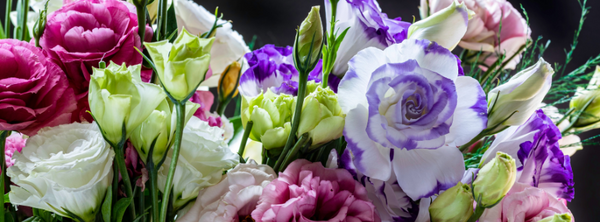
Lisianthus : How Group Numbers Enhance Your Garden
If you’re passionate about Lisianthus and want to grow these stunning, romantic flowers successfully, there’s one key factor to understand: group numbers. This classification system is more than just an industry tool—it’s the secret to getting the best blooms all season! Whether you’re running a flower farm or simply looking to enhance your home garden, mastering Lisianthus group numbers (from 1 to 4) can elevate your results, making your Lisianthus journey smoother, more efficient, and more profitable.
So, why are group numbers so important? These numbers help predict each Lisianthus variety’s response to environmental conditions—day length, light intensity, and temperature. By choosing the right group for your climate, you can maximize blooms and reduce the guesswork in planning your growing schedule.

Group 1 best suited to cooler conditions. Group 1 varieties bridge the gap between winter and spring, allowing growers to extend their Lisianthus season just as the days start lengthening. These flowers are versatile and offer flexibility for spring plantings, making them an excellent choice for early-season blooms.
Next we have, Groups 2 and 3 are your hardworking summer stars. These Lisianthus varieties flourish during long, sunny days, producing tall, elegant stems and larger blooms perfect for bouquets and arrangements. These groups are essential for peak-season flower production, bringing height and quality to any arrangement. Their adaptability also means they handle heat better than the lower groups, so you’ll find them a staple on any flower farm during the prime summer months.
At the top, Group 4 Lisianthus is designed for the longest days and warmest temperatures, even thriving in summer greenhouse conditions in warmer climates. This group requires high light levels and warm temperatures, producing the tallest, most impressive blooms when conditions are just right. Group 4 varieties are ideal for late summer and early fall, offering gorgeous blooms when other flowers might be winding down.
Understanding these groups helps in more ways than just timing. Choosing the right varieties based on group numbers can help you align with natural lighting and temperature, minimizing the need for supplemental lights and cooling systems. This approach saves energy, reduces costs, and can even lessen your environmental footprint—a win-win for you and your garden!

For flower entrepreneurs, this knowledge is crucial. Higher group numbers often mean longer stems and larger flowers, which are in high demand for cut flower markets. Knowing which varieties will reach their full potential in your climate allows you to plan for quality and consistency, keeping customers coming back for those premium blooms.
It’s important to remember that even Group 4 varieties have their limits. Extreme heat or overly long days can stress any plant, so it’s key to understand your own climate and microclimate conditions when selecting varieties.
In short, understanding Lisianthus group numbers is like having a roadmap to success. Whether you’re cultivating for beauty, business, or both, choosing the right group can make a world of difference. With this system, you’ll have blooms to delight, inspire, and captivate season after season. So embrace the power of group numbers and watch your Lisianthus garden flourish!

